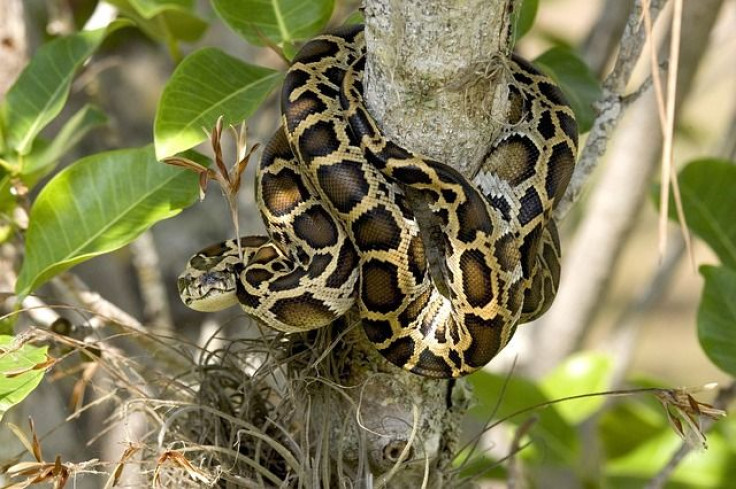What Is The Florida Python Bowl? Hunters Gather For Event That Targets Invasive Snakes
With bags and wrangling tools in tow, over 500 have gathered in the Florida Everglades for an event known as the Python Bowl. Lasting 10 days and concluding this coming Monday, the event aims to help clear out the invasive Burmese pythons from the area which have wreaked havoc on the ecosystem for decades.
Pythons were first discovered in the Florida Everglades in 2000. It is believed that the animals were introduced to the region by pet owners and potentially a research facility that was destroyed by Hurricane Andrew in 1992. Since then, they are believed to have contributed to significantly decreased biodiversity in the area. A 2012 study found that, since the invasion of pythons, the Everglades boasted 99% fewer raccoons, 98% fewer opossums, and 87% fewer bobcats.
“I saw an opossum last night out on the levee and it was the first small animal I’ve seen in probably five or six months,” hunter Thomas Aycock said.
What could be more exciting than the Super Bowl? How about the Python Bowl? Florida Governor Ron DeSantis officially kicked off the Florida Python Challenge Python Bowl to remove as many non-native pythons from the wild as possible. https://t.co/VlVO6YYuFu
— USFWS Fisheries (@USFWSFisheries) January 11, 2020
Photo Credit USGS pic.twitter.com/8Xwk3QeLRS
Participants in the hunt are competing to capture the longest and heaviest snake possible. Pythons can grow up to 18 feet long and weigh up to 100 pounds. The winner will receive a $2,000 cash prize. Other high-scoring hunters will receive secondary prizes, including off-road vehicles.
In addition to contests like the Python Bowl, numerous agencies have begun instituting removal programs, which offering wages and bonuses to hunters for bringing in pythons. A report from last year found that hunters like these have captured roughly 1,900 snakes since March 2017.
The total population of pythons in the Everglades is believed to be nearly 300,000. Despite their attention-grabbing nature, events like the Python Bowl tend to make only a minor dent in this overwhelming population. An eight-hour hunt most often results in the capture of only one snake.

© Copyright IBTimes 2024. All rights reserved.











